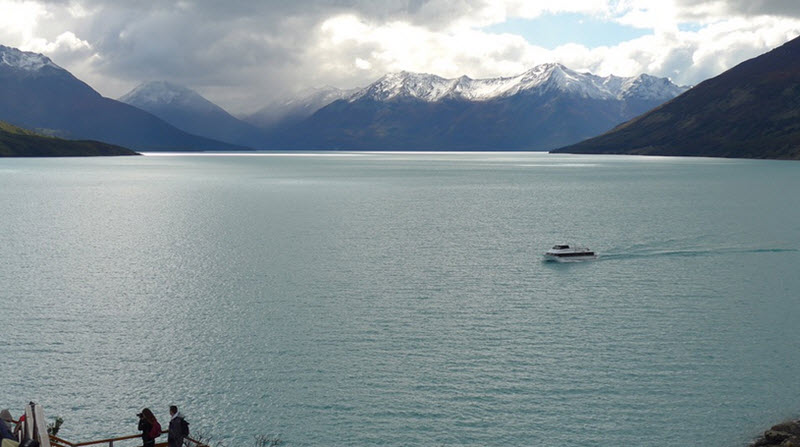Covering an area of over 2,800 square miles, Parque Nacional Los Glaciares is the largest national park in Argentina, and it was declared a UNESCO World Heritage Site in 1981.
Established back in 1937, Los Glaciares includes well-preserved Magellanic subpolar forest and west Patagonian steppe. There is also the giant ice cap from which the park derives its name. This ice cap, which feeds 47 large glaciers, is the largest icecap outside Antarctica, Greenland and Iceland. Some of the glaciers fed by this ice cap start as low as 1,500 meters above sea level, which is unusual. In the rest of the world, glaciers typically start at 2,500 m or higher.
Short facts about Parque Nacional Los Glaciares
Established: May 11, 1937
Area: 726,927 ha (2,806.68 sq mi)
English name: Los Glaciares National Park
Coordinates: 50°0′0″S 73°14′58″W
Province: Santa Cruz
Nearest city: El Calafate
Connections
Los Glaciares National Park in Argentina borders Torres del Paine National Park in Chile, creating a very large combined protected area. Torres in turn borders Bernardo O’Higgins National Park, which is connected to Laguna San Rafael National Park, Alacalufes National Reserve, and Katalalixar National Reserve (all in Chile).
Lake Argentino and Lake Viedma

Los Glaciares National Park can be divided into two main parts, each dominated by a big elongated lake: Lake Argentino in the south and Lake Viedma in the north. Both lakes feed the Santa Cruz River which runs to the Atlantic.
Lake Argentino is the largest lake in the whole country, and this part of the park contains both major and minor glaciers. The major glaciers that flow into Lake Argentino are Perito Moreno, Upsala and Spegazzini. Perito Moreno can be reached by land, while the other two are accessible only from the water.
Viedma Lake is fed primarily by the Viedma Glacier, but also by a few minor ones. This part of the park contains a number of mountains that have become popular for climbing and hiking.
Weather
Air temperatures in the park will depend a lot on altitude, but even at higher altitudes the mean annual temperature here is just a few degrees below the freezing point. Of course, that is an average value – individual days and nights can drop significantly lower so it is important to read up in advance and be prepared.
Generally speaking, the park has a cool and moist climate, with the eastern part recieving around 900 mm of precipitation in an average year while the western part gets roughly 500 mm. Snowfall is common during the winter season.
The mountains will hold a lot of the humidity that comes in from the Pacific Ocean, which has helped create the aridness of the Patagonian steppe on the other side of the range.
Wildlife
Between the ice and the arid Patagonian steppe, you will find a fertile region characterized by Magellanic subpolar forests with plenty of lenga beech trees and guindos, and also some Antarctic beech. The forest is home to many animals, including the endangered Huemul (Hippocamelus bisulcus), also known as the South Andean deer.
Other examples of animals that live in the park are cougars and guanacos. The guanacos are wild relatives of the domestic llama.

Over one hundred bird species has been observed in the park, and it is home to large raptors such as eagles and condors. The big flightless ñandú birds of the genus Rhea also live here.
